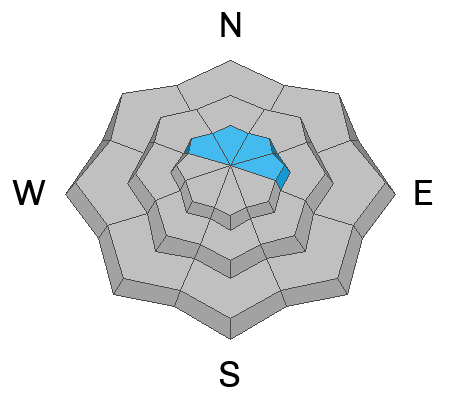Only three spots remain for Moab and San Juan County locals for our Backcountry 101 class on Jan 31-Feb 1. Click
here to sign up and use the discount code MOAB2025.
Geyser Pass Road: The road is plowed to the trailhead. Surface is dirt down low, snowpacked and icy above. AWD with good tires recommended.
The road above the winter trailhead is officially closed to wheeled vehicles. Grooming will begin soon.
6 A.M. Snow and Weather Data
24 Hour Snow: 0" 72 Hour Snow: 0" Season Total Snow: 46" Depth at Gold Basin: 23"
Winds on Pre-Laurel Peak: W 5-10 Temp: 18° F Percent of Normal (SWE): 128%
Weather
After a several day run, ridge top winds have finally backed off into mostly single digit speeds out of the west. Today, look for mostly sunny skies, light westerly winds, and high temps in the upper 20's at 10,000'. The upcoming week remains dry for us with a gradual warming trend. Models continue to advertise a storm around Christmas.
General Conditions
Conditions are officially a mixed bag and with overall thin cover, it's getting harder to find good turns but there is still some soft snow out there in sheltered areas. Ridgetop winds last week stripped snow from south and westerly aspects while depositing snow on to leeward, north and easterly facing slopes. The sun has also greatly affected solar aspects and many are bare or crusted over. Structure remains poor with a weak, faceted layer beneath a slab, but stability tests have been generally non-reactive for some time and it's been nearly three weeks since the last significant snow and avalanche cycle.
Want some good news? It's still very early season and we are at 128% of normal water content. Overall depths above 10,000' are between 24 and 30 inches. The dense snow we received in November was perfect base building material and it remains strong and supportive. While many snowpacks around the region from the South San Juans to the Bear River Range near Logan have faceted through into piles of cohesion-less sugar, our snowpack still has quite a bit of body to it. Even the facets under the slab have consolidated and strengthened. If it doesn't start snowing by the new year, we can start to worry, but for now, sit tight, ride your bike or hike in the desert. It's all good.
Snowpack and Weather Data
Snow cover is still pretty good for this time of year. Especially on sheltered northerly facing terrain. The high peaks have been wind blasted.
Sunny slopes are growing quite thin, but then again, they often are.










